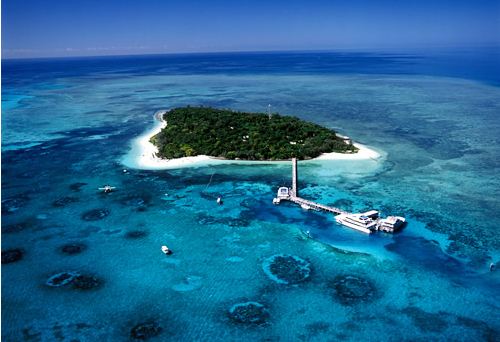Just 45 minutes across the Coral Sea by fast catamaran from Cairns, Green Island is a beautiful 6000 year old coral cay located within the Great Barrier Reef Marine Park – one of the Seven Natural Wonders of the World. It is home to over 120 native plant species, colourful bird life and surrounded by coral gardens and abundant marine life to explore. It’s the only coral cay on the Great Barrier Reef with a rainforest growing on it.
The island is 27 km (16 miles) from Cairns and sits on the north-western edge of the reef flat.
The reef surrounding Green Island supports a diverse range of habitats and marine life. There are two significant habitats:
- the seagrass beds in the shallows
- the reef that starts shallow and continues into the depths.
Seagrass beds support a wide range of animals, from juvenile fish that use the grass for protection from predators to large Sea Turtles and Dugong that feed on the seagrass.
The reef around Green Island has over 190 different types of hard corals and over 100 types of soft corals.
With a circumference of just 1.6km, Green Island is home to over 120 species of plants, including a unique mixture of coastal and rainforest plants. The coastline is ringed by short, scrubby coastal vegetation that can survive drier conditions along the beach. But, step a few feet in to the centre of the island, and the vegetation changes abruptly to a dense, shady vine-thicket rainforest.
In fact, of the 300 coral cays on the Great Barrier Reef, Green Island is the only one with a rainforest. Coconut trees are not thought to be native to the island, but were introduced to the island in 1889 to provide food, drink and shelter for fishermen and stranded sailors.
Green Island attracts a wide range of birds, including land birds, seabirds and migratory birds that pass through the Great Barrier Reef on the way to nesting grounds. There are over 55 species of birds regularly seen on Green Island. Of these, 13 are seabirds and 38 are shore and land birds. About 15 types of birds regularly nest on the island.


